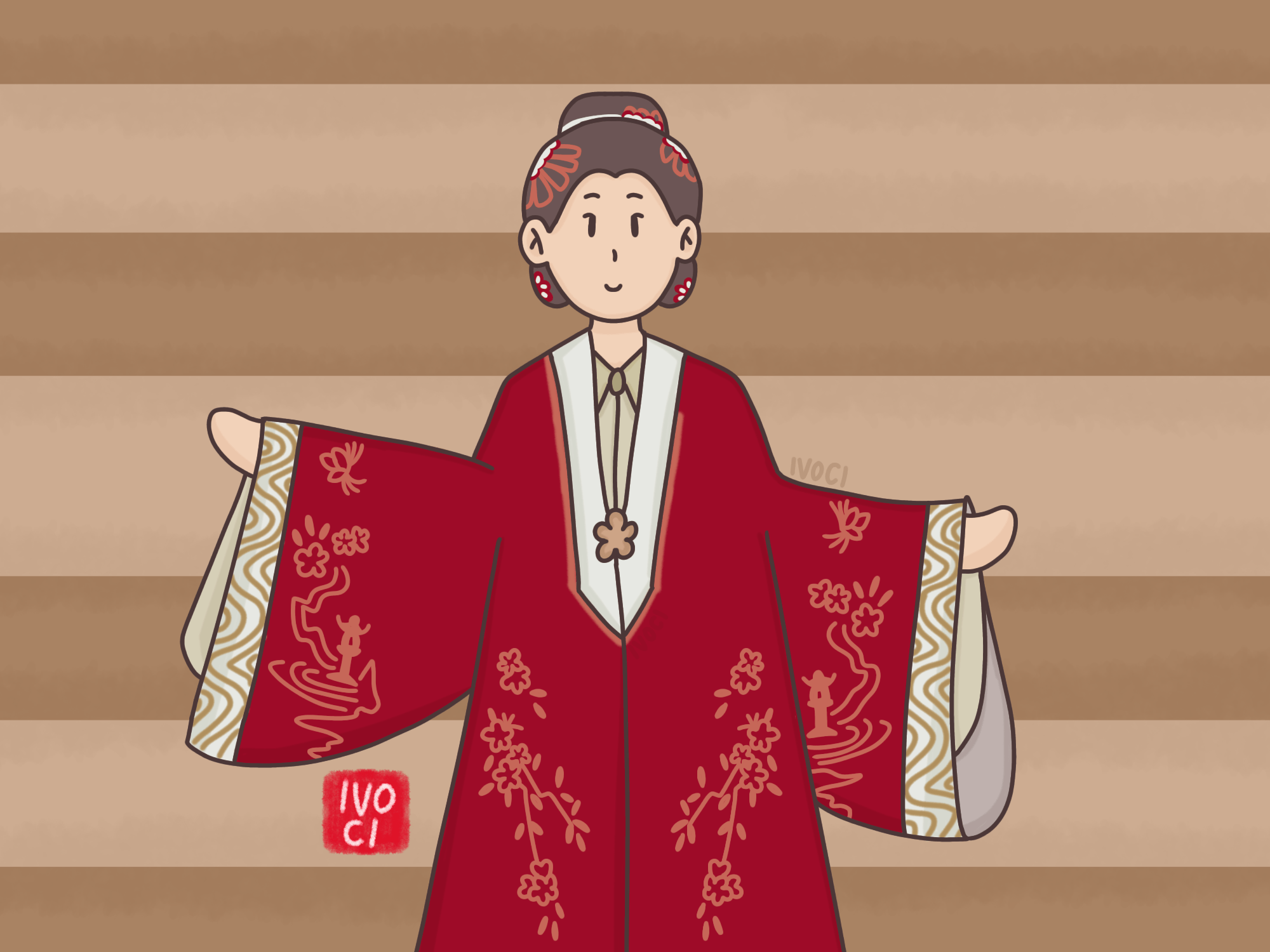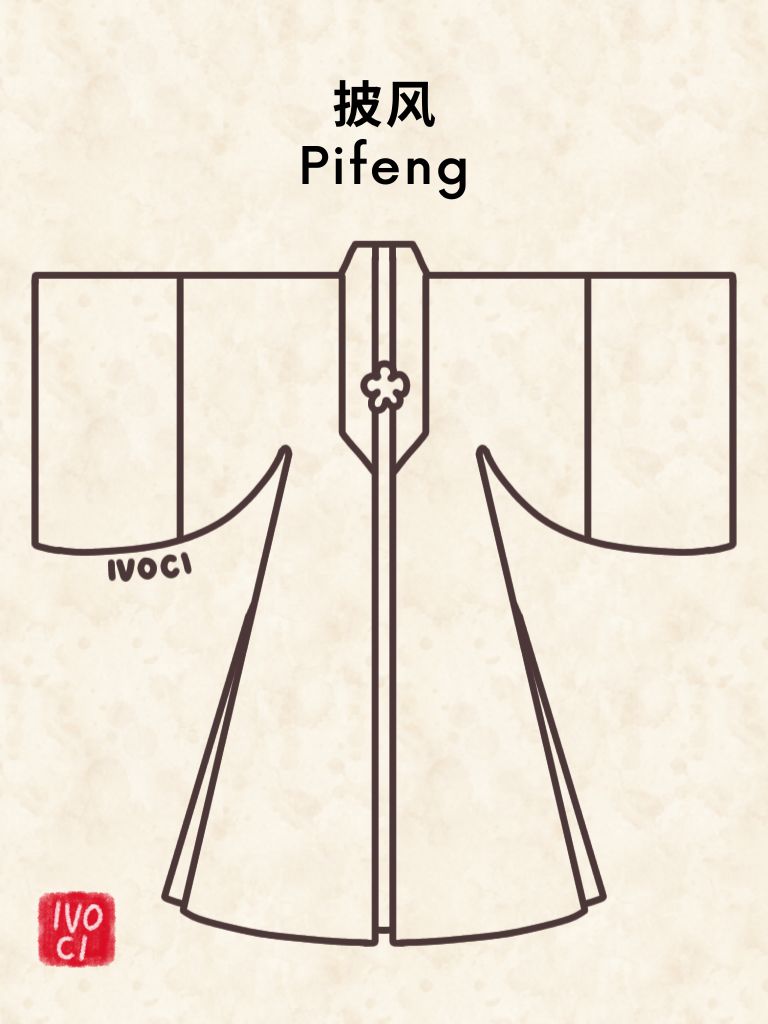Pifeng in the Ming Dynasty is actually similar to the beizi in the Song Dynasty.
Beizi (Chinese: 褙子 ; pinyin: bèi zi) is an item worn in traditional Chinese clothing that is common for both men and women.
Beizi refers to a large loose outer coat with loose and long sleeves.
Beizi was most popular during the Song Dynasty, and Ming Dynasty, also from the early Qing to the Middle Qing dynasties.
Beizi is from the Song dynasty.
When beizi is worn by men, it is sometimes referred to as changyi (Chinese: 氅衣 ; pinyin: chǎng yī), hechang (Chinese: 鹤氅 ; pinyin: hè chǎng), or dachang (Chinese: 大氅 ; pinyin: dà chǎng) when worn with large sleeves and a tie tied around the waist.
But in the Ming dynasty, beizi was referred to as pifeng (Chinese: 披风 ; pinyin: pī fēng).
Pifeng is a form of Chinese Hanfu outerwear mostly with a central front collar, dui-jin (Chinese: 对襟 ; pinyin: duì jīn).
With two long sleeves and slits under both armpits, the front is decorated with a pair of lace for fastening, and the flower-shaped jade buttons are also used for fastening.
Pifeng can be worn both indoors and outdoors.
History background
From many portraits and notes, we know that pifeng was popular clothing in the Ming Dynasty.
In the “云间据目抄 yún jiān jù mù chāo” at the end of the Ming Dynasty, “the pifeng casual clothes” was mentioned, and the Qing Dynasty entered this customs.
Pifeng also appears repeatedly in “A Dream of Red Chamber (Chinese: 红楼梦 ; pinyin: hóng lóu mèng)”. It is worth noting that there are both pifeng and doupeng in “A Dream of Red Chamber”, indicating that there are differences between the two.
In Ming Dynasty, Wang Qi’s “Sancai Tuhui (Chinese: 三才图会 ; pinyin: sān cái tú huì)” said: “Beizi, the current pifeng.” “In other words, pifeng in the Ming and Qing dynasties was beizi of the Song Dynasty.”
The illustration beizi in “Sancai Tuhui” shows a kind of long shirt with a central front collar or dui-jin and slits under the two armpits with two long sleeves.
Chinese thinker Zhu Shunshui in the late Ming and early Qing dynasties described the pifeng in “Shunshui Zhu Shi Tan Qi (Chinese: 舜水朱氏谈绮 ; pinyin: shùn shuǐ zhū shì tán qǐ)” as a central front collar, with a hem and left and right slits.
According to the information from “Sancai Tuhui” and “Shunshui Zhu Shi Tan Qi”, pifeng in the Ming Dynasty is actually similar to the beizi in the Song Dynasty, but pifeng is different from doupeng. Pifeng has sleeves with a central front collar and slits on both sides.
Pifeng is also often seen in some ancient portraits.



Leave a Reply